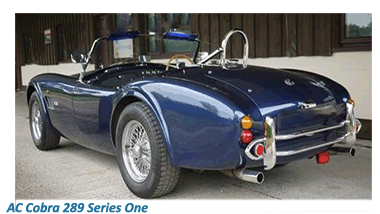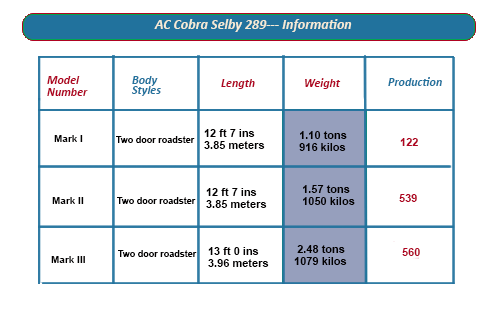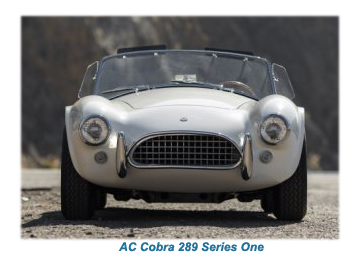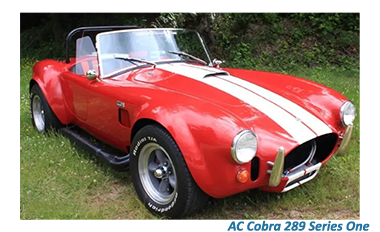
The remarkable collaboration between AC Motors and Carol Shelby, renowned designer and fabricator of track cars, began very early in the Nineteen Sixties.
 Shelby was a long-term admirer of the AC Ace and approached the powers at be at the company, expressing his interest in fitting a V8 engine into AC's Ace competition roadster, which had hitherto been equipped with a straight six.
Shelby was a long-term admirer of the AC Ace and approached the powers at be at the company, expressing his interest in fitting a V8 engine into AC's Ace competition roadster, which had hitherto been equipped with a straight six.
 AC Motors were happy to participate in the project, and soon a prototype was produced - the Cobra was born.
AC Motors were happy to participate in the project, and soon a prototype was produced - the Cobra was born.
The first 75 Shelby Cobras were fitted with a Ford 260 HiPo 4.2 litre engine while another 51 had the more massive 289 (4.7 litres).
At the end of 1962, Alan Turner, AC's chief engineer, made significant modifications including fitting a new steering column, taken from the VW Beetle.
Just over five hundred of these Mark II versions were produced, although they failed to compete well in track events, being a lot less powerful than their principal rivals.
![]()
 To overcome this possible shortcoming, in 1965 AC and Shelby got together to create the Mark III version, similar in appearance to the Mark II, but e powered by a whopping Ford 427 7 litre engine.
To overcome this possible shortcoming, in 1965 AC and Shelby got together to create the Mark III version, similar in appearance to the Mark II, but e powered by a whopping Ford 427 7 litre engine.
 AC sent some 300 rolling chassis to Shelby and at the same time produced a narrow-fendered AC 289 version for the European market.
AC sent some 300 rolling chassis to Shelby and at the same time produced a narrow-fendered AC 289 version for the European market.The Cobra was almost too fast for its good. Legend has it that racing driver Jack Sears reached 185 mph (298 km/h) on the MI in 1964, supposedly a contributory factor in the government's decision to introduce speed limits on British roads.
During the mid-Sixties, the AC Shelby Cobra 289 won several track events around the world, giving a first-class account against the recognised market leaders, in particular, Aston Martin, Ferrari and Jaguar.
![]()
After a year of production, the Shelby Cobra’s 4.2-litre (260 cu in) engine was swapped for a 4.7-litre (289 cu in) version: the resultant Cobra 289 is now the second best-known AC of all time.

The last Cobra 289s were designated Sports and these came with the flared arches of the later 427 model
Despite playing second fiddle to its big brother, the Cobra 427, the 289 was in many ways the more practical street car.






